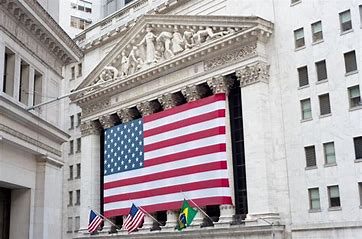The upcoming release of the February personal-consumption expenditures (PCE) index promises to be a pivotal moment for investors, offering crucial insights into the state of U.S. economic conditions. However, there’s a catch: financial markets will be closed for the Good Friday holiday, adding a layer of complexity to the usual market dynamics.
While U.S. stock exchanges will close on Friday, the Treasury market will conclude trading an hour early on Thursday, in observance of Good Friday. Despite the market closure, the government will remain open and is scheduled to release economic data, including the highly anticipated PCE index.
Last year, the March jobs report was released on Good Friday, allowing traders to engage in an abbreviated session for trading stock-index futures, which ended at 9:15 a.m. ET. However, following the release of the PCE data this year, all CME futures trading will be closed on Friday.
Economists anticipate that the PCE index will underscore ongoing price pressures, with the headline PCE expected to rise by 0.4% in February, outpacing January’s increase of 0.3%. The annual rate is projected to inch up to 2.5% from the previous month’s 2.4%. Similarly, the core measure of the PCE index, which excludes volatile food and energy components and is favored by the Federal Reserve as an inflation indicator, is forecasted to advance by 0.3% in February, with year-over-year core inflation expected to remain at 2.8%.
The recent uptick in the consumer-price index (CPI) has stirred unease on Wall Street, prompting some investors to recalibrate their expectations regarding the timing of the Federal Reserve’s first interest-rate hike. As a result, Friday’s PCE report is deemed “more important than usual,” serving as a litmus test to discern whether the previous inflation figures were transitory blips or indicative of a sustained trend of elevated inflation.
With financial markets shuttered, traders will eagerly await the opening of the futures market over the weekend, as they analyze the implications of the inflation report on the Fed’s monetary policy trajectory. The outcome of Friday’s data release may potentially influence the Fed’s plan regarding interest-rate cuts in 2024, prompting investors to adjust their strategies accordingly in the days ahead.
The Federal Reserve’s recent decision to keep interest rates unchanged for the fifth consecutive meeting underscored the central bank’s cautious approach amid evolving economic conditions. The latest “dot plot,” a graphical representation of policymakers’ interest rate projections, maintained the forecast of 75 basis points worth of rate cuts by the end of 2024. Fed-funds futures traders are currently pricing in a roughly 61% probability that the first 25-basis-point rate cut will occur in June, according to the CME FedWatch Tool.
Looking ahead, Monday’s trading session is expected to provide a clearer indication of how investors interpret the upcoming economic data. However, Mike Cornacchioli anticipates a relatively muted reaction in financial markets due to “recency bias,” wherein investors tend to prioritize recent market-moving events over historical ones. Cornacchioli believes that there’s a downside risk associated with the PCE data, suggesting that higher-than-expected readings could challenge the narrative put forth by Fed Chairman Jerome Powell, especially as the window for initiating a rate-cutting cycle narrows.
Despite these uncertainties, major U.S. stock indexes closed mostly higher on Thursday, with the S&P 500 and the Dow Jones Industrial Average setting new records. Fed Governor Chris Waller’s remarks regarding high inflation readings and robust job gains reinforced the sentiment that there is no rush to cut rates this year.
Overall, stocks registered solid gains both for the month and the quarter. The S&P 500 saw a remarkable rally of over 10% in 2024, marking its strongest first-quarter performance since 2019. Similarly, the Dow Jones Industrial Average surged approximately 5.6% during the same period, inching closer to the significant milestone of 40,000. The Nasdaq Composite closed the first quarter with a robust gain of 9.1%.
As the month or quarter draws to a close, market participants anticipate portfolio rebalancing activities by managers, which could lead to price swings. While such adjustments are widely anticipated, they nonetheless have the potential to impact market dynamics.
